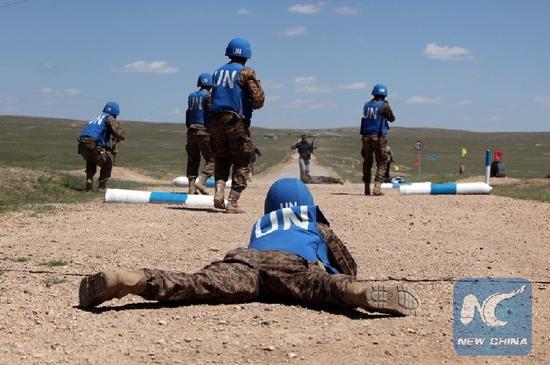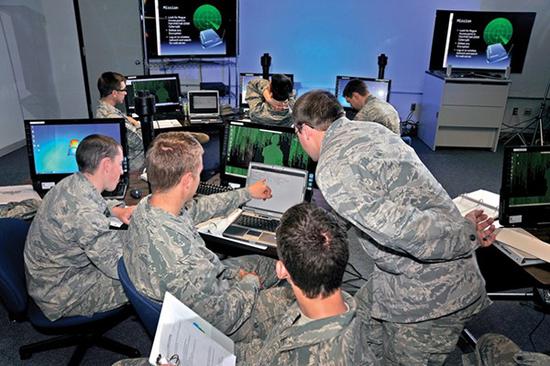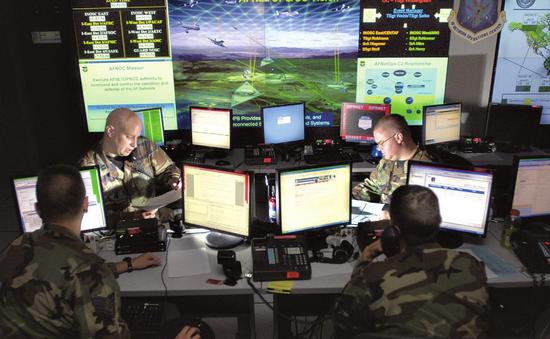NATO announced on January 18 that with its assistance, the newly built cyber security center of the Mongolian army was officially completed to enhance Mongolia’s cyber defense capabilities.
On the same day, the two sides jointly cut the ribbon for the completion of the network security center (the Cyber Incident Response Capacity Center of the Mongolian Ministry of Defense and the General Staff of the Armed Forces) through a video link.
Mongolia is located in central Asia, bordering China and Russia. Due to its special geographical location, Mongolia’s military security cooperation with the United States or NATO will attract external attention.
Mutual demand, Mongolia and “third neighboring country” approach
Mongolia, which is adjacent to a big country, has long considered its security relatively fragile. For historical and other reasons, Mongolia has some other thoughts while communicating with neighboring powers.
For the sake of security and development, Mongolia has been actively seeking security and self-protection and developing the most beneficial international living space.
Following the principle of “open” and “multi-fulcrum” balanced diplomacy, Mongolia not only pays attention to developing relations with its two major neighbors, but also develops diplomatic relations with the United States, Japan, Germany, the “third neighboring countries” such as the European Union and NATO as one of the important strategies to ensure its national security.
At the same time, Mongolia also hopes to obtain assistance from the United States and NATO in the military reform process of the Mongolian army, and participate in more international peacekeeping operations with the support of the United States and NATO to expand its influence on the international stage.
For Western countries, Mongolia can not only support the war on terror launched, but also exert influence on the key strategic position between China and Russia. Therefore, Mongolia is also one of the important targets of the West.
Under this mutual demand, Mongolia’s relationship with the West began to approach. Specifically, in 1987, the United States and Mongolia officially established diplomatic relations, and Mongolia, which emerged from Soviet control after the end of the Cold War, began to Westernize, and the United States strongly supported it, with a view to making it a “Western model” in Asia and filling the vacuum left by the collapse of the Soviet Union.
In June 1996, Mongolia and the United States signed the Agreement on Exchange and Exchange of Visits between Mongolian and American Military Departments, which stipulates that the two sides can send troops to each other’s countries to strengthen peacekeeping exchanges, and if necessary, the U.S. military can temporarily station in Mongolia.
In August of that year, Mongolia and the United States also signed the Mongolia-United States Security and Cooperation Agreement, which stipulates that when the security of one party is actually threatened by war or natural disasters, the other party has the obligation to provide assistance or humanitarian relief.

Since 2003, Mongolia and the United States have begun to hold joint military exercises code-named “Khan Exploration”. This is the first time that the U.S. Marines have participated in such exercises.
It is also the largest joint military exercise held between Mongolia and the United States. It breaks through the civil defense and rescue nature of the previous “Baker Ape Fox” series of exercises between Mongolia and the United States, and becomes Real live-fire joint military exercises.
Since then, the “Khan Exploration” exercise has become an annual routine joint exercise between the United States and Mongolia. Under the guise of counter-terrorism, the United States also took advantage of holding joint military exercises with Mongolia to set up radar tracking and control and electronic monitoring stations in Mongolia to improve intelligence gathering capabilities.
Mongolia’s military cooperation with NATO began more than a decade ago. After becoming NATO’s “global partner” in 2003, Mongolia began to send military personnel to hot spots to support NATO operations.
Under the leadership of the United States, Mongolia sent 10 groups of more than 1,200 troops to participate in the Iraqi “Operation Freedom” from 2003 to 2009, and two more groups of 72 soldiers to participate in the NATO-frame operation in Kosovo in 2005 and 2006.
Since 2009, 150 Mongolian soldiers have traveled to Afghanistan to participate in the U.S. and NATO-led anti-terrorism operations, becoming the 45th country to officially send troops to Afghanistan. In March 2012, NATO and Mongolia officially signed a partnership agreement. On May 20 of the same year, Mongolia participated in the NATO summit for the first time as a “Partnership for Peace”.
Build a network security center to follow the trend of military development
NATO’s assistance in establishing a cyber security center this time seems not as “powerful” as other military exchanges, but it is of great significance.
As we all know, with the rapid development of science and technology, network information technology not only promotes social progress and economic prosperity, but also brings new challenges.
Now the security of cyberspace has expanded from pure information security to national security, national defense security, critical infrastructure security, social security, economic security and personal security, and cyberwarfare, a new form of war, is also of great concern.
Due to the development of the Internet of Things, the overlap between cyberspace and physical space is increasing, so it is possible to launch attacks from cyberspace to physical space.
Under the background of increasing competition among big countries, traditional military powers have regarded strategic emerging technologies with network information technology as the core as subversive technologies that “change the rules of the war game” and strive to open up the “generation gap” with their strategic opponents.

The U.S. military has made great progress in the construction, training, command and actual combat of cyber warfare.
As of September 2018, all 133 network mission units under the U.S. Army Cyber Command have been expanded, with about 6,200 full-time active-duty soldiers in cyber warfare and nearly 90,000 related combat and auxiliary personnel.
In particular, in July 2020, Trump rarely admitted in an interview with the media that he ordered the U.S. Cyber Command in 2018 to launch a cyber attack on the “Russian Internet Research Institute”, which is tantamount to publicly indicating that the United States has used cyber warfare for inter-state games.
Russia, which is unwilling to lag behind, has also taken frequent actions, such as conducting disconnection exercises, plans to establish an independent closed Internet, and a network protection center. In June 2020, the first network force in Britain was officially announced.
The characteristics of network interconnection and anonymity, coupled with the rapid development of technology, make cyber confrontations between countries more hidden, more complex and dangerous.
Considering that the construction of network troops has been one of the important means for the modernization war of the armies of various countries, and the great powers have enough network capabilities to cause harm to other countries, Mongolia, which has always been worried about its own security, can not sit still, and NATO, which is at the forefront of network technology, has naturally become its ideal cooperation. Object.
It is reported that from 2017 to 2020, the two sides will cooperate in the new Mongolian Army Cyber Security Center through the NATO Peace and Security Science Plan.
During this period, NATO provided training and equipment for Mongolia, and the NATO Communications and Information Bureau provided technical support.
In the announcement, NATO said that after the completion of the new network security center, Mongolia can better respond to network security challenges and improve the resilience and security of its information technology systems.
Mongolia said that NATO training covers the Mongolian network security team, and the equipment assisted has been officially approved by NATO and the latest technology has been applied. In the future, not only network engineers and technicians will benefit, but also all users of Mengfang Military Network will benefit.
It is not difficult to see that in the future, Mongolia and NATO will further strengthen exchanges and cooperation in the emerging military field, including cyberspace.



